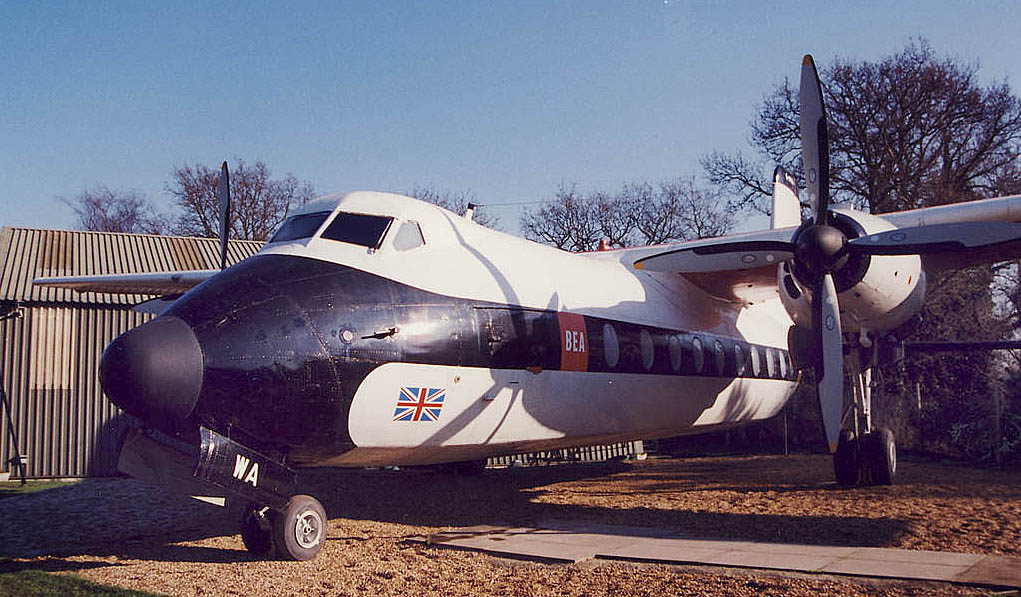
Handley Page Herald
 |
| G-APWA is preserved at Woodley, where the type began as a Miles design |
| The Handley Page Herald was one of several types developed
in the 1950s as a replacement for the Douglas DC3 short-range airliner
but – unlike rivals types such as the Fokker F27 and Avro 748
– it was a commercial failure. The original Herald flew for the first time on August 25, 1955, with four 870hp Alvis Leonides Major piston engines, with a second following a year later. By this time the turboprop was clearly the way forward and Handley Page redesigned the Herald around two 2,150hp Rolls-Royce Dart 527 engines. The first prototype flew in this guise on March 11, 1958, and the first series 100 production machine got airborne on October 30, 1959. Only four series 100s were built, each as 47-seaters, before production switched to the series 200 in 1961. This had a fuselage stretched by 3ft 7in (1.09m) to allow seating for 56 and it became the major production model, with 38 built. The only other variant was the type 400, a military version of which the Royal Malaysian Air Force bought eight. Production ended in 1968 after a total of 50 had been built, a major disappointment for Handley Page and a contributor to its collapse a year later. Major operators included British Island Airways, which later became Air UK, and British Air Ferries, which operated Heralds into the 1980s. The last operator was Channel Express in the UK, which retired its last freighter. G-BEYF, in March 1999. A handful survive in museums in the UK. |
| Contents | Photos and census | Update |